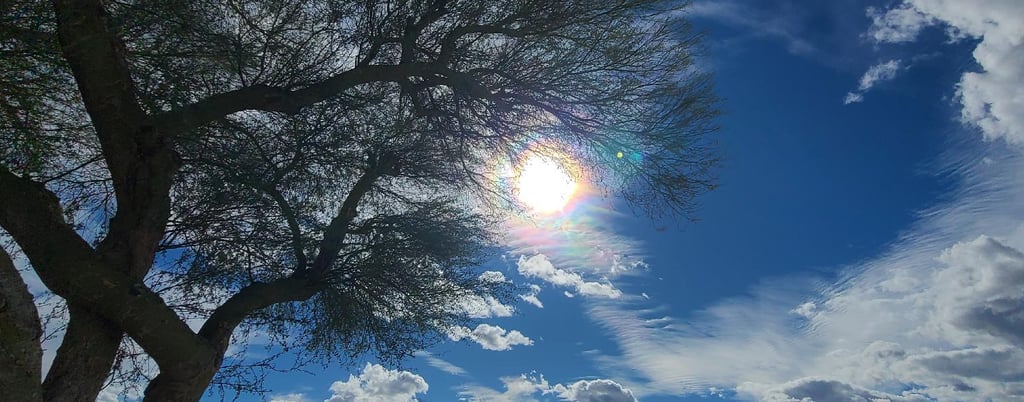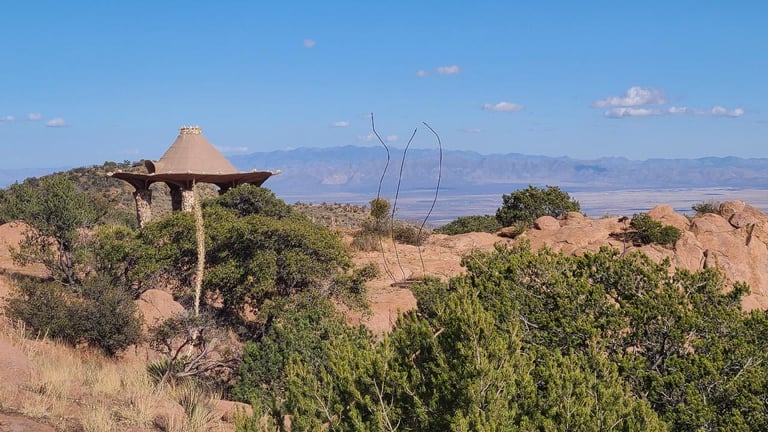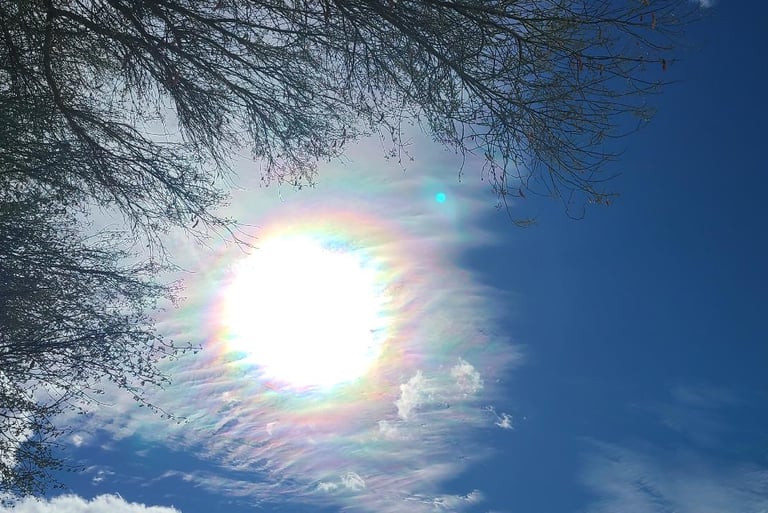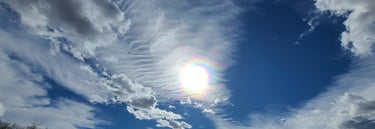Rainbow Clouds
February 21 - The Mind - Drinking Water - #23-2024
MINDRESEARCH
AL
2/22/2024


Water, we all need it, but it seems so scarce here in the dry desert environment of Quartzsite. There are no lakes or creeks nearby, and when it rains, the washes fill up, but then most of the water runs off and away. There are around 3000 permanent residents, and a winter population that can be in the hundreds of thousands. I started wondering what’s their source of drinking water.
The town began when Charles Tyson found a reliable source of water about 40 feet below the surface back in 1856, but that’s not a safe or reliable source anymore. In fact, that aquifer had become contaminated by petrochemicals and has since been cleaned up. To provide safe water, the city has drilled down over 500 feet to a different aquifer. Water here is not free, as we have found in other places in the country. It costs at least 25 cents a gallon for water treated by a reverse osmosis process. As cheapskates, we have been making due with plain filtered water for our uses.
Phoenix is the nearest metropolis, and it relies on the waters from dammed reservoirs on the Salt, Verde, and Colorado rivers to take care of the needs of the burgeoning city, along with a small number of groundwater wells. There are hundreds of miles of canals and pipelines to transport this water across the state. I question if that was the wisest way to access water, but they didn’t ask me.
This tale of water was spurred by an advertisement I saw online recently: it was promoting a new way to get safe drinking water; hydropanels. They work similar to solar panels, except they create clean, safe drinking water, using the sun to power fans that pull pure water vapor out of the air , condensing it into liquid water. It works similar to a moonshiner’s still. Since this is essentially distilled water, minerals are added for health and taste. The water circulates and is kept clean until needed. It can do all of this without the need for electrical hookup or the infrastructure of a traditional water distribution system, and can be produced nearly anywhere. Each panel produces about six-16 ounce bottles of purified water on average each day, which is enough drinking water for two people. This process might not take care of all your water needs, but it could be part of the solution. It has a downside for our northern friends: it doesn’t work during freezing temperatures. The equipment goes into hibernation mode, like many of us do in the cold of winter. Source is the name of the company that sells the hydropanels, and they have installations around the world where communities have not had access to safe drinking water, including tribal lands in Arizona and Idaho, an isolated poor rural town in California, each here in the United States, plus rural communities or schools in India, South America, and Africa.
There are several other means that are employed to get drinking water. I mentioned the reverse osmosis system many use in Quartzsite. This process involves a high pressure pump that forces water through a semi-permeable RO membrane, removing up to 99% of the dissolved salts, particles, colloids, organics, bacteria and pyrogens from the incoming water. Reverse osmosis is the most used process of desalination. Other ways are electrodyalisis, gas hydrate formation, nanofiltration, and solar distillation, all great processes that provide drinking water to parts of the world that do not have access to much fresh water, but they are costly to operate, and they do create the waste stream with concentrated salts and pollutants.


We have seen many people collecting rainwater by using elaborate gutter systems to save all of the water that falls on their roof and store it in cisterns or containers. These have been in very dry areas, or in the high desert where the cost of a well might be extreme or impossible. We, ourselves, have done it on a small scale in Florida, where we put in a couple rain barrels to collect rain water from the gutters to use in our gardens, avoiding the use of chlorinated city water.
This had me thinking back to all the places I’ve lived and where my water has come from. Back on the farm, we had well water, and that was the coldest, best tasting water I can remember. Amery, WI has two deep wells into the Trempealeau and Franconian Sandstone Aquifers for a water source. Milwaukee, WI gets its water from one of the largest freshwater sources in the world: Lake Michigan. Caledonia, MN pumps its water from two 700 foot deep wells into the Wonewoc Sandstone Aquifer. La Crosse, WI gets its water from fifteen high pressure artesian wells that are only 100-150 feet deep, but are down along the banks of the Mississippi River, 500 feet lower in elevation than Caledonia. Tarboro, NC treats water from the Tar River to supply the people of the town with drinking water. Where we lived in Sarasota, FL the water came from a combination of groundwater from wells that are 1200 feet deep, and surface water from the Manatee Reservoir. Pigeon Forge, TN draws its water from Douglas Lake, piping it through miles of pipeline to the treatment plant in town. Either source has its drawbacks.
Wells deplete the water underground, leaving voids in the layers that can collapse, potentially creating sinkholes. This is especially true in sandy or limestone areas. Surface waters can be more easily contaminated, and often require more treatment than groundwater. There is no perfect solution.
I have been grateful I have always had good water to drink and bathe. I often forget how fortunate we are. I think the hydropanels might be a good idea for a future house. Like I said, it won’t take care of all of our water needs, but it can provide us clean drinking water, and not have to rely on electricity to get it.
Today we had pizza, cake, and ice cream to help celebrate Carol’s birthday, then did more measuring to determine where to best place the solar power components in Lynn’s van and lengths of wire to order. We have a little more to figure out, but soon she will be able to camp off-grid whenever she wants.
While there, the clouds around the sun had a strange appearance: they created a halo of a pastel rainbow iridescence. They say it is ice crystals in the clouds, refracting the sunlight to create the effect. It was quite the sight! The white clouds were rippled by the wind, giving tails to the rings of pink, yellow, green, blue, and violet surrounding the sun. I am so glad Lynn interrupted our work so we didn’t miss it. The photos don’t do it justice. They say seeing a halo like this means it will rain soon, but alas, it didn’t. A little rain would have been welcome, since the blowing dust here is increasing every day.




Share your comments on Facebook or email us at roadfronts@gmail.com
Subscribe for monthly updates
Current location:
